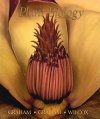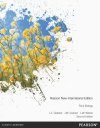About this book
For non-majors and mixed-majors introductory botany (plant biology) courses. Plant Biology focuses students on the function of plants and the role they play in our world. With evolved content and a new organization, the authors emphasize the scientific method to help students develop the critical thinking skills they need to make sound decisions throughout life. Together, the emphasis on how plants work and the development of critical-thinking skills support the authors' goal of fostering scientific literacy.
Contents
I. Introduction
1. Introduction to Plant Biology
2. Plants and People
II. Plant Structure and Function
3. Molecules and Plants
4. Cells
5. Photosynthesis and Respiration
6. DNA, RNA, and Protein Synthesis
7. Cell Division: Mitosis and Cytokinesis
8. Plant Structure, Growth, and Development
9. Stems
10. Roots
11. Leaves
12. Plant Behavior
III. Plant Reproduction, Genetics, and Evolution
13. Reproduction, Meiosis, and Life Cycles
14. Genetics and the Laws of Inheritance
15. Genetic Engineering
16. Biological Evolution
IV. Diversity
17. Naming and Organizing Microbes, Viruses, and Plants
18. Prokaryotes and the Origin of Life
19. Protists and the Origin of Eukaryotic Cells
20. Fungi and Lichens
21. Seedless Plants: Bryophytes, Lycophytes, and Pteridophytes
22. Gymnosperms and the Origin of Seeds
23. Angiosperm Reproduction: Flowers, Fruits, and Seeds
24. Flowering Plant and Animal Coevolution: Pollination and Seed Dispersal
V. Ecology and Plant Adaptations to the Environment
25. Principles of Ecology and the Biosphere
26. Arid Terrestrial Ecosystems
27. Moist Terrestrial Ecosystems
28. Aquatic Ecosystems
29. Human Impacts and Sustainability
Customer Reviews
Biography
Linda E. Graham is Professor of Botany and Environmental Studies at the University of Wisconsin-Madison. She received her Ph.D. in Botany from the University of Michigan, Ann Arbor. Dr. Graham has taught a nonmajors plant biology course each year for more than 20 years. She has a strong desire to inspire students to learn about plants as a way of understanding and appreciating nature. Dr. Graham's teaching focuses on biological topics that every informed citizen should understand in order to make responsible decisions about both the environment and personal well-being. She also teaches courses on the biology of algae and bryophytes, contributes to an introductory biology course for majors, and has taught marine botany on a remote tropical island. Dr. Graham's research explores the evolutionary origin of land-adapted plants, focusing on their cell and molecular biology as well as ecological interactions. Dr. Graham's research and teaching are connected-both inspired by a desire to help preserve the life-sustaining properties of the natural world. Dr. Graham is the co-author of Algae, a majors textbook on algal biology, as well as the author of Origin of Land Plants.
James M. Graham received his Ph.D. in Biological Science from the University of Michigan, Ann Arbor. He is an Associate Scientist at the University of Wisconsin- Madison, where he conducts research in the area of microbial ecology. Dr. Graham contributed a chapter on phytoplankton ecology to the textbook Algae, by L. Graham and L. Wilcox. He has also taught a number of courses, including ecology, biology of algae, introductory biology for majors, and introductory botany for non-science majors.
Lee W. Wilcox received his Ph.D. in Botany from the University of Wisconsin-Madison. His research interests include symbiosis, algal evolution, and plant and algal cell biology. Dr. Wilcox designed the art programs for both Algae and Plant Biology and has provided many original photographs to both texts. He has also contributed scientific illustrations to a variety of other scientific articles and book chapters. During his experience as a graduate teaching assistant and, later, as a guest lecturer in a variety of courses, he became acutely aware of the need to illustrate subject matter clearly and with an eye toward aesthetics in order for students to best appreciate the material.




































